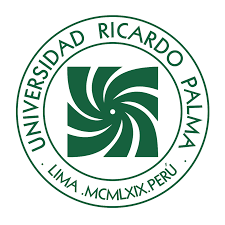Gamma scanning technique for diagnosting oil and natural gas refining equipment in operation
DOI:
https://doi.org/10.31381/perfiles_ingenieria.v20i15.3546Keywords:
Industrial columns, scanning, radioisotope, source, detector, pack, neutrón, backscateringAbstract
Radioisotope techniques are highly useful tools to investigate variety of problems in oil & natural gas refining and petrochemical industry. These techniques and applications are in routine service to industries of many countries. Gamma-ray scanning, often referred to as “column scanning”, is a convenient, cost effective, fast, efficient and non-intrusive technique to examine inner details of a process column or a reaction vessel, while it is in operation. Column scanning allows an engineer in petroleum refineries, gas processing installations and chemical plants, to study tray or packing hydraulics inside a distillation column at any set of on-line condition. It provides essential data to optimize the performance of columns, extend column run times, track the performancedeteriorating effects of fouling and solids deposition, and identify maintenance requirements well in advance of scheduled turnarounds. This on-line information can reduce repair downtimes significantly. On the other hand, it is possible to determine the operational state of a container hosting inside a hydrogenated material, inspecting the internal condition, using the neutron logging from the outside. Neutron backscatter can be the solution in these cases. Either way, the fundamental condition for its application is the existence of hydrogenated material in contact with the other side of the wall. It is also possible to measure levels from the outside of an enclosure with hydrogenated materials or low atomic number; for example, levels of acids or other corrosive or hazardous materials. Another alternative is the detection of interfaces between fluids inside tanks. Column scanning were introduced a few years ago. Since then, the gamma scanning technique is largely used in routine services. Qualified technical staffs have performed hundreds of scans on various types of process columns in petroleum refineries, gas processing installations and chemical plants.
Downloads
References
J. Abdullah, “Gamma Scanning for Troubleshooting, Optimisation and Predictive Maintenance of Distillation Columns,” in Petroleum Refineries and Chemical Plants, Proceedings of the International Nuclear Conference, 2002, Kuala Lumpur, Malaysia.
J. Charlton, Radioisotope Techniques for Problem-Solving in Industrial Process Plants, Leonard Hill, 1986.
G. Maggio, R. Gillen y J. Graiño, Medidor de interfases para torre de agua pesada, Buenos Aires, CNEA, 1980.
International Atomic Energy Agency, “Radiotracer Technology for Engineering Unit Operation Studies and Unit Processes Optimization”, Technical Report, Krakow, Poland, 1999.
International Atomic Energy Agency, “Radioisotope Applications for Troubleshooting and Optimizing Industrial Processes”, Technical Report, March 2002.
Safety series N°38. IAEA, “Radiation Protection Procedures”, Viena, 1973.
S. Glasstone y A. Sesonske, “Ingeniería de Reactores Nucleares”, Barcelona, Editorial Reverté, 1968.
S. Calvo et al., “Guía para Aplicaciones Industriales de Radiotrazadores y Fuentes Selladas de Radiación”, OIEA-ARCAL XLIII, 2000.
S. Calvo, G. Maghella, E. Mamani and J. Maguiña, “Overview of radiotracer experiments for better understanding of wastewater and water treatment plants in Lima (Perú)”, Revista del INCQ.
Downloads
Published
How to Cite
Issue
Section
License
Copyright (c) 2020 Perfiles de Ingeniería

This work is licensed under a Creative Commons Attribution 4.0 International License.
In the event that the manuscript is approved for its next publication, the authors retain the copyright and assign to the journal the right of publication, edition, reproduction, distribution, exhibition and communication in the country of origin, as well as in the abroad, through print and electronic media in different databases. Therefore, it is established that after the publication of the articles, the authors may make other types of independent or additional agreements for the non-exclusive dissemination of the version of the article published in this journal (publication in books or institutional repositories), provided that it is explicitly indicated that the work has been published for the first time in this journal.
To record this procedure, the author must complete the following forms:

1.png)





